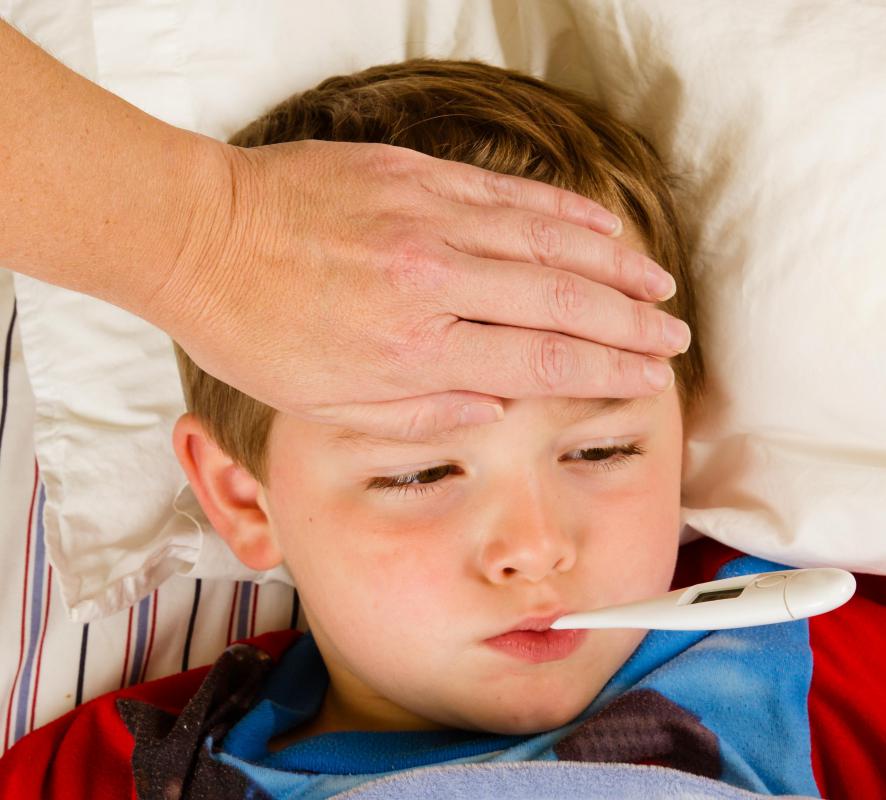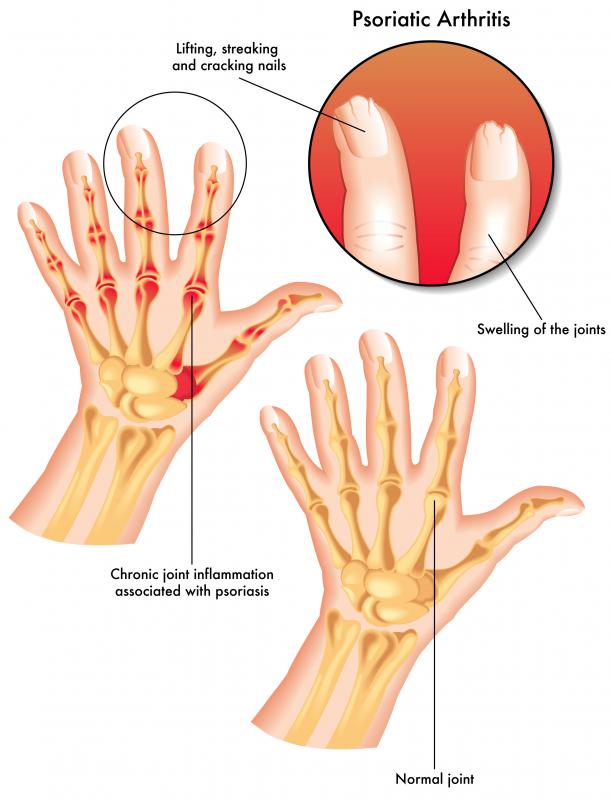At WiseGEEK, we're committed to delivering accurate, trustworthy information. Our expert-authored content is rigorously fact-checked and sourced from credible authorities. Discover how we uphold the highest standards in providing you with reliable knowledge.
What is Juvenile Idiopathic Arthritis?
Juvenile idiopathic arthritis (JIA), previously known as juvenile rheumatoid arthritis, is an inflammatory condition that leads to stiff, painful joints. The condition can also lead to permanent joint damage or problems with growth. In severe cases, the disease can also affect the heart and lymph nodes. Juvenile idiopathic arthritis is the most common type of arthritis in children.
Children diagnosed with juvenile idiopathic arthritis experience varying symptoms depending on the severity and subtype of the disease. Systemic arthritis affects the child's entire body, rather than being restricted to the joints. Children with systemic arthritis often develop a fever and rash on the torso, arms, and legs. Oligoarthritis affects fewer than five joints in the body within the first six months, and can also cause swelling in the eye. Children diagnosed with oligoarthritis often improve with age, though the condition can spread to other joints over time.

Polyarthritis affects more than five joints during the first six months, and is more common in girls than in boys. Another less common type of juvenile idiopathic arthritis is psoriatic arthritis, which occurs concurrently with a rash from a chronic skin condition called psoriasis. Enthesitis-related arthritis usually affects the back, hips, and eyes and is most common in boys older than eight years old.

Since there are no specific tests for JIA, doctors rely on ruling out other conditions that could cause a child's symptoms. X-rays, MRIs, and other imaging studies can help doctors assess the condition of the joints. Other tests, such as blood and joint fluid tests, help doctors determine the severity of swelling and rule out other infections or diseases that could be responsible for the child's symptoms.
Treatment for juvenile idiopathic arthritis includes medication, physical therapy, and braces or splints. Nonsteroidal anti-inflammatory drugs are generally the first medications used to help control swelling in the joints. Disease-modifying anti-rheumatic drugs help prevent further damage to the joints from the disease by inhibiting the immune system from attacking the inflamed joints. Corticosteroid injections or oral medications are used to relieve extremely painful and swollen joints, but they are only used for short periods of time in severe cases due to the risk of potentially serious side effects, including weakened bones.
Physical therapy can help children with juvenile idiopathic arthritis regain flexibility and range of motion. Exercises typically focus on strengthening the affected joints. Massage and whirlpool therapy may also be used to help reduce pain. Some children require special braces or splints to help stabilize affected joints and protect them from damage from improper movements.
AS FEATURED ON:
AS FEATURED ON:












Discuss this Article
Post your comments